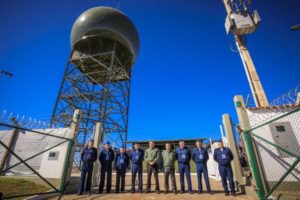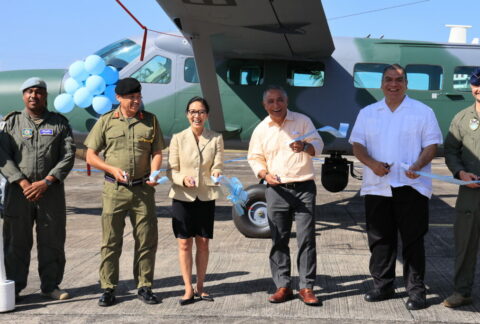On June 30, 2021, the Brazilian Air Force (FAB, in Portuguese) launched the new Ponta Porã Radar Station, in Mato Grosso do Sul (MS). The station is the third in a series of new radars that the FAB installed along the border in the country’s central-west region. The first station began operating in August 2020, in the city of Corumbá, and the second, in March 2021, in Porto Murtinho, also in MS.
The objective is for the new equipment to enhance the identification of low flying aircraft in Brazil’s border region with Bolivia and Paraguay, increasing detection of unauthorized traffic or unlawful use of aircraft. According to the newspaper Correio do Estado, the two neighboring countries are the main departure points for clandestine flights to transport drugs, especially cocaine.
“For instance, last year alone [2020], nearly 4 tons of cocaine were intercepted on clandestine flights from Bolivia to Brazil. The effect of installing radars at the border to combat drug trafficking may represent an increase in the number of seizures, and also curb the frequency of flights carrying drugs into the country,” the article said.

During the inauguration ceremony, General Carlos de Almeida Baptista Junior, FAB commander, highlighted the potential for the FAB’s operational capacity with the new Ponta Porã Radar Station. “The acquisition of capabilities resulting from the operation of these three radars is consistent with the alignment of National Defense Strategy objectives, which considers airspace surveillance an important responsibility for the consolidation of other Brazilian Air Force tasks,” said Gen. Baptista Júnior. “The new radars will strengthen aerial surveillance and curb the ongoing practice of cross-border crimes perpetrated by low flying aircraft.”
At the inauguration ceremony, Reinaldo Azambuja Silva, governor of MS, highlighted the importance of integrated operations benefiting the protection of state borders: “In 2020, our security forces, along with federal forces, seized more than 760 tons of drugs that would have been distributed in Brazil. Protecting borders is protecting Brazil.”
Benefits
The new Ponta Porã Radar Station is equipped with a long-range primary radar and a secondary radar. It has aircraft detection capability within its coverage area with a range of up to 450 kilometers, corresponding to about 636,000 square kilometers, nearly twice the area of MS state.
The equipment is prepared to operate 24 hours a day, 365 days a year, and the information generated can be viewed by air traffic controllers of the Second Integrated Center for Air Defense and Air Traffic Control (CINDACTA II, in Portuguese), an institution of the Department of Airspace Control (DECEA, in Portuguese), based in Curitiba, Paraná, and responsible for airspace control in the region.
According to information published in DECEA’s magazine, Aeroespaço, the integration of radar information allows CINDACTA II controllers to identify low-altitude flights in the border region, resulting in operational benefits for both civilian aircraft control and air defense.
2. The Ponta Porã Radar Station was the third implemented by the FAB. The radar stations in Corumbá and Porto Murtinho were already in operation, all in Mato Grosso do Sul. (Photo: Brazilian Air Force Staff Sergeant Bianca Viol)









